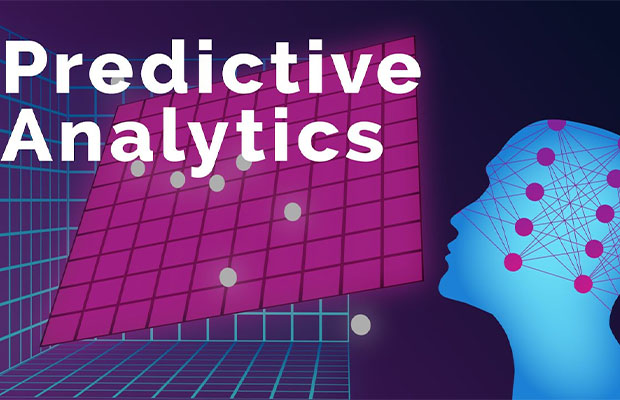Predictive analytics and data mining have become more well-known as big data has become the lifeblood of organizations and businesses. The vast amounts of data that are gathered every day can be accessed in two different ways, each of which can yield useful information. Often thought to be synonyms, data mining and predictive analytics are two distinct analytics methodologies with their own unique benefits.
Predictive analytics and data mining are the two main subcategories of analytics software that this article will discuss. Let’s first understand the terms data mining and data profiling separately before we begin to differentiate between them.
Read More: Key Differences Between Data Analytics and Data Mining
Table of Contents
What Are Predictive Analytics?
Predictive analytics is the analysis done to predict the future event using the previous data because, as the name suggests, “Predictive” means to predict something. It is the process of removing information from already collected sets of data in order to uncover relevant information, identify trends, and predict upcoming events. The future cannot be predicted precisely by predictive analytics. It makes scenarios for potential future events.
Let’s use a hypothetical hotel chain as our example to better understand the concept of predictive analytics. The hotel chain needs to know how many guests will be staying there on a given weekday so that it can prepare enough staff and resources to handle the demand from the guests.

Advantages Of Predictive Analytics In Business
These are the stated top business advantages of predictive analytics.
- Predictive analytics improves productivity.
- It lessens commercial risk.
- It aids in decision-making processes in any business organization.
- It promotes competition in the workplace.
Strategies Of Predictive Analytics
By implementing these strategies, many businesses have increased their turnover, met objectives, and increased revenues based on the data gathered from predictive analytics.
- matching supply and demand.
- Fraud prevention.
- making long-lasting inventories.
- client contentment
- Aiming to maximize profit by setting prices appropriately.
What Is Data Mining?
Data analysis and information synthesis are processes known as “data mining,” which involve analyzing data from various contexts. Customer patterns, purchase patterns, transaction times, customer demand, and the connections between sold items could all be revealed by data mining. It is a strong technology that has the potential to greatly help businesses target the most important information in the data set they have gathered about the customer behaviors and potential of the customers.
Process Of Data Mining
- Business Understandings
- Data Selection
- Data Preparation
- Modelling
- Evaluation
- Deployment
Application Of Data Mining
- Financial Analysis
- Biological Data Analysis
- Market Analysis
- Retail Industry
- Manufacturing Engineering
- Criminal investigation
Difference Between Data Mining & Predictive Analytics
Data mining and predictive analytics differ from each other in several aspects, as mentioned below:
Techniques And Tools
Data mining uses four main techniques to extract data, even though there are many that are currently popular. Regression, association rule discovery, classification, and clustering fall under these categories. These methods necessitate the use of specific tools with functions like data scrubbing, clustering, and filtering. Data mining typically employs two programming languages: Python and R.
Predictive analytics, in contrast to data analytics, makes predictions about future market trends or business outcomes using knowledge of the business world. Predictive analytics analyzes the data that is already available and forecasts the results using a variety of software technologies, including artificial intelligence and machine learning.
Purpose
Data mining is used to give businesses descriptive power by identifying intriguing patterns in the data, as well as the predictive power to estimate unknown or future values.
Future outcomes and trends are gathered and predicted using predictive analytics. Businesses can better understand their individual customers and the trends they adhere to by using this information, even though it cannot predict what will happen in the future. This then enables marketers to take the appropriate action at the appropriate time, which has an impact on the future.
Talent
Data mining is typically carried out by statisticians, machine learning experts, and engineers with a strong mathematical background.
Business analysts and other domain experts who are capable of analyzing and interpreting patterns that are found by machines frequently use predictive analytics.
Functionality
Three steps can be used to break down data mining. Exploration, the preparation of the data through collection and cleaning. By applying the same dataset to various models via model building or pattern identification, businesses are given the tools to select the best option. The chosen data model is then used to predict outcomes in the final step, deployment.
The focus of predictive analytics is on a customer’s online behavior. Various models are used for training. The model could be trained to evaluate the behavior of the most recent dataset by using sample data to analyze older datasets. This information could also be used to forecast customer behavior.
Outcome
Marketers can understand the data with the aid of data mining. As a result, they are able to comprehend customer segments, purchasing trends, behavior analytics, and other concepts.
A company can determine and forecast the next step that its customers will take with the help of predictive analytics. Additionally, it aids in forecasting customer churn rates and the quantity of stock needed for a specific product. Predictive analytics also allow marketers to offer highly individualized deals by calculating how many new subscriptions they would acquire as a result of a particular discount or what kinds of products their customers are looking for as an addition to the primary product they purchased from the seller.
Data Mining And Predictive Analytics In Future
By 2022, the market for predictive analytics is anticipated to grow to $10.95 billion. We are currently in a time of continuous growth, and businesses have already begun to use data mining and predictive analytics to sift through the data at their disposal in order to look for patterns, make predictions, and put into practice business-impacting decisions.
By increasing productivity, lowering costs, conserving resources, identifying fraud, and producing quicker results, both strategies help marketers make informed decisions. You require the best expertise and the right direction in order to utilize data mining and predictive analytics to their fullest potential.




